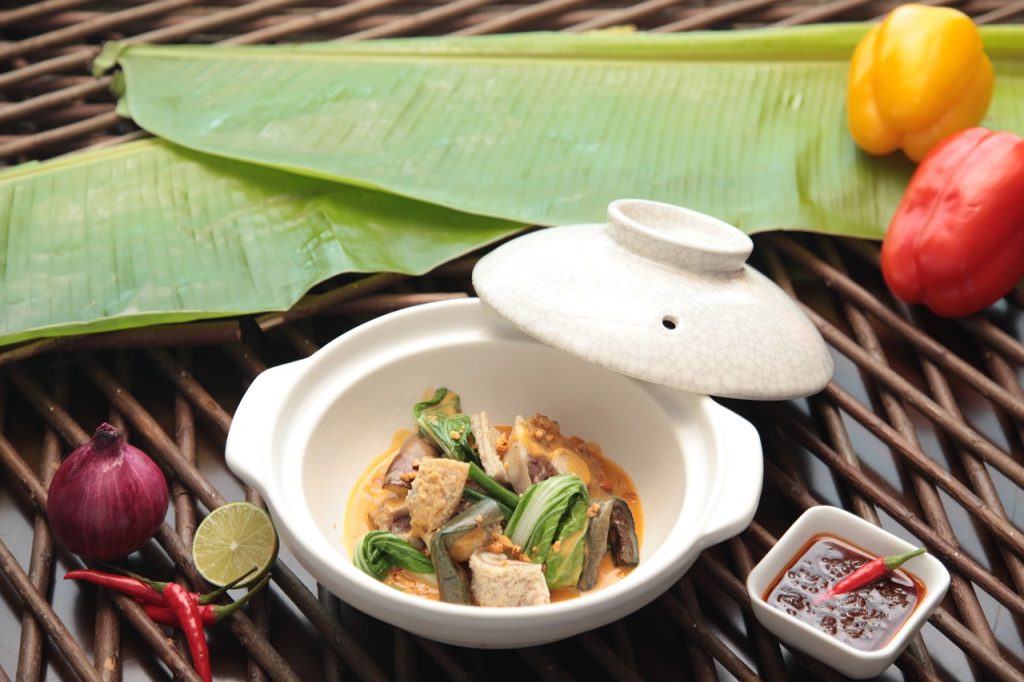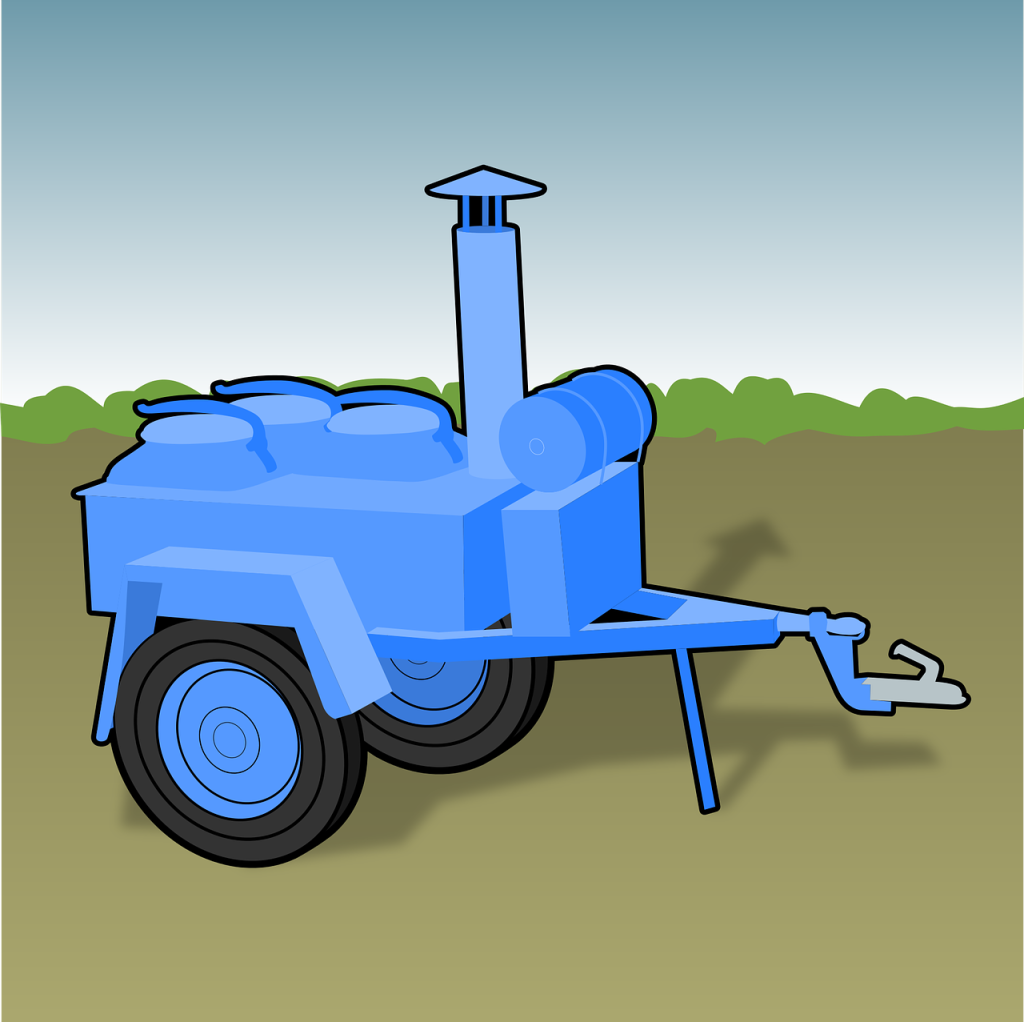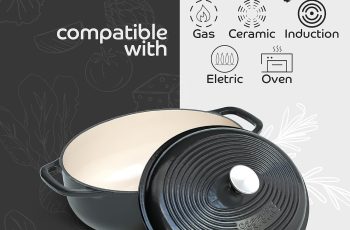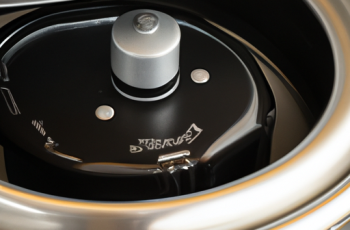Ad Blocker Detected
Our website is made possible by displaying online advertisements to our visitors. Please consider supporting us by disabling your ad blocker.
In today’s fast-paced society, time is of the essence, especially when it comes to preparing meals. Luckily, pressure cookers have emerged as a revolutionary kitchen tool that can significantly speed up the meal prep process. By utilizing the power of steam and high pressure, pressure cookers can cook food up to 70% faster than traditional cooking methods. Whether you’re a busy professional with limited time or a home chef looking to streamline your cooking routine, pressure cookers offer a convenient and efficient way to whip up delicious meals in a fraction of the time. With their ability to retain nutrients and lock in flavors, pressure cookers are becoming an essential appliance in any kitchen aiming to optimize efficiency without compromising on taste.

Benefits of Pressure Cookers
Faster cooking time
One of the biggest benefits of using a pressure cooker is the significant reduction in cooking time. Compared to traditional stove-top cooking methods, pressure cookers can cook meals up to 70% faster. This is achieved by trapping steam inside the sealed cooking environment, which raises the internal temperature and speeds up the cooking process. With a pressure cooker, you can prepare meals that would normally take hours in just a fraction of the time, allowing you to enjoy delicious home-cooked meals even on busy weeknights.
Retains nutrients and flavors
Pressure cooking is a gentle and efficient method of cooking that helps retain the nutrients and flavors of the ingredients. The sealed cooking environment prevents the loss of water-soluble vitamins, and the short cooking time ensures that the natural flavors of the food are preserved. Unlike boiling or steaming, where nutrients can be leached out into the cooking liquid, pressure cooking helps to lock in the nutritional value of the ingredients, making it a healthy option for meal preparation.
Saves energy
Pressure cookers are incredibly energy-efficient, making them a great choice for those looking to reduce their energy consumption. The sealed cooking environment and rapid cooking time mean that less heat is lost during the cooking process. Additionally, pressure cookers utilize less water compared to traditional cooking methods, reducing the amount of energy required to heat the cooking liquid. By using a pressure cooker, you can save both time and energy, while still enjoying delicious meals.
Versatile cooking options
Pressure cookers are incredibly versatile appliances that can handle a wide variety of cooking tasks. From soups and stews to rice and grains, pressure cookers can do it all. They can be used for both savory and sweet dishes, making them a valuable addition to any kitchen. With the multitude of recipes available specifically designed for pressure cookers, you can explore new and exciting dishes while still benefitting from the time-saving nature of this cooking method.
How Pressure Cookers Work
Pressure cooking process
The pressure cooking process involves cooking food at a high pressure and temperature, achieved by trapping steam inside a sealed cooking pot. As the liquid inside the pot reaches boiling point, steam is produced, which increases the pressure inside the pot. This elevated pressure raises the boiling point of water, allowing the food to cook at a higher temperature. The increased pressure also forces the steam into the ingredients, resulting in a faster cooking time.
Sealed cooking environment
One of the key elements of pressure cooking is the sealed cooking environment. Pressure cookers are designed with a tight-fitting lid that locks in the steam and prevents it from escaping. This creates a highly pressurized environment inside the cooker, which helps to cook food more quickly and efficiently. The sealed environment also prevents the flavors and aromas from escaping, resulting in a more flavorful end product.
Steam-based cooking method
Pressure cookers rely on steam to cook the food. As the liquid inside the pot reaches boiling point, steam is produced, which then penetrates the ingredients and cooks them. The high pressure created by the steam allows the food to cook at a much higher temperature, resulting in faster cooking times. The steam-based cooking method also helps to break down tough fibers in meats, making them tender and flavorful. Overall, the combination of high pressure and steam makes pressure cooking an effective and efficient cooking technique.
Choosing the Right Pressure Cooker
Types of pressure cookers
When choosing a pressure cooker, it’s important to consider the different types available. The two main types of pressure cookers are stovetop and electric. Stovetop pressure cookers are placed directly on a heat source and offer precise control over the cooking process. Electric pressure cookers, on the other hand, are standalone appliances that plug into an electrical outlet and offer additional features such as programmable controls and automatic timers. The type of pressure cooker you choose will depend on your personal preference and cooking needs.
Capacity and size considerations
Pressure cookers come in a range of sizes, so it’s important to choose one that suits your cooking requirements. The capacity of a pressure cooker is measured in quarts and determines how much food it can hold. If you typically cook for a small family, a 6-quart pressure cooker should be sufficient. However, if you often entertain or cook for larger groups, you may want to consider a larger capacity, such as 8 or 10 quarts. It’s also important to consider the size of the pressure cooker in relation to your stovetop or kitchen counter space.
Safety features to look for
Safety should be a top priority when choosing a pressure cooker, as the high pressure and temperature involved can potentially be dangerous if not properly managed. Look for pressure cookers that have built-in safety features such as pressure release valves and locking mechanisms. These features help to prevent accidents and ensure that the pressure cooker is used safely. Additionally, choose a pressure cooker from a reputable brand that meets all safety certifications and standards.
Preparation Tips for Pressure Cooking
Proper ingredient preparation
Before using a pressure cooker, it’s important to properly prepare the ingredients. This includes washing and chopping vegetables, trimming meats, and measuring out all the necessary ingredients. Proper ingredient preparation not only ensures that the food cooks evenly, but it also saves time during the actual cooking process. Taking the time to prepare ahead will help streamline the pressure cooking experience and result in delicious meals.
Timing and pressure settings
Understanding the timing and pressure settings of a pressure cooker is essential for successful cooking. Most pressure cookers have different pressure settings, usually indicated as high or low pressure. The cooking time will vary depending on the recipe and the pressure setting used. It’s important to follow the recipe’s instructions regarding timing and pressure to achieve the desired results. Taking note of the cooking times and pressure settings will help you become more comfortable and confident in using a pressure cooker.
Adding liquids and seasonings
When cooking with a pressure cooker, it’s important to add enough liquid to allow steam to form. This liquid can be water, broth, or any other flavorful liquid that complements the ingredients. Adding the right amount of liquid is crucial for creating the desired steam and preventing the food from drying out. Additionally, don’t forget to season the food before cooking. Pressure cooking can intensify flavors, so be mindful of the amount of seasoning you add to avoid overpowering the dish.

Popular Pressure Cooker Recipes
Quick and easy soups
Pressure cookers are perfect for making quick and flavorful soups. Whether you’re craving a classic chicken noodle soup or a spicy chili, pressure cooking can get the job done in half the time. The high pressure and steam help to infuse the flavors of the ingredients, resulting in a rich and delicious soup. From hearty stews to creamy bisques, the possibilities are endless when it comes to pressure cooker soups.
Tender and flavorful meats
One of the standout features of pressure cooking is its ability to tenderize even the toughest cuts of meat. From succulent pot roasts to fall-off-the-bone ribs, pressure cooking can transform inexpensive cuts into mouthwatering meals. The high pressure and steam help to break down collagen in the meat, resulting in tender and juicy results. Whether you’re cooking beef, pork, chicken, or lamb, a pressure cooker is a game-changer for meat lovers.
One-pot rice and grain dishes
Pressure cookers excel at cooking grains such as rice, quinoa, and barley. The sealed cooking environment ensures even cooking and perfectly cooked grains every time. Simply add the grains, liquid, and any desired seasonings to the pressure cooker, set the appropriate cooking time and pressure, and let the pressure cooker work its magic. Whether you’re whipping up a batch of fluffy white rice or experimenting with a flavorful mixed grain dish, pressure cooking makes it incredibly easy and convenient.
Meal Prep Tips with Pressure Cookers
Batch cooking for multiple meals
One of the biggest time-saving benefits of pressure cookers is their ability to cook large batches of food at once. By utilizing the large capacity of a pressure cooker, you can prepare enough food to last for multiple meals. This is particularly useful for busy individuals or families who don’t have the time or energy to cook every day. By dedicating a portion of your time to batch cooking with a pressure cooker, you can have ready-to-eat meals throughout the week, saving you both time and effort.
Freezing and reheating meals
Pressure cookers are excellent tools for meal prepping and freezing meals for later use. Once you’ve cooked a large batch of your favorite recipe, portion it into individual containers and freeze them. You can then simply thaw and reheat the meals as needed, making mealtime a breeze. Pressure cooker recipes often freeze well and maintain their flavors and textures, ensuring that every reheated meal tastes just as delicious as the day it was cooked.
Using meal prep containers
Investing in good-quality meal prep containers can make a world of difference when using a pressure cooker for meal prep. Choose containers that are microwave-safe, freezer-safe, and have tight-fitting lids to keep your meals fresh and securely stored. Opt for containers that are stackable to maximize refrigerator or freezer space. By portioning your pressure cooker meals into individual containers, you can easily grab a meal on the go or for work, eliminating the need for last-minute cooking.

Time-Saving Techniques
Rapid pressure release
Most pressure cooker recipes will specify whether a natural or rapid pressure release is recommended. Rapid pressure release involves manually releasing the pressure immediately after cooking, while a natural pressure release allows the pressure to come down naturally over a certain period of time. For time-sensitive recipes or when you’re in a hurry, using the rapid pressure release method can save precious minutes. However, it’s important to follow the recipe’s instructions to ensure the food is cooked to perfection.
Multi-level cooking
Some pressure cookers come with multiple levels or compartments, allowing you to cook different foods simultaneously. This is particularly useful when preparing meals with multiple components, such as a main dish and side dish. By utilizing the different levels or compartments, you can save time by cooking everything at once. For example, you could cook a protein on one level and rice or vegetables on another, resulting in a complete meal with minimal effort.
Sautéing and browning in the pressure cooker
Many pressure cookers have a sauté or browning function, which allows you to sear or brown ingredients directly in the cooker before pressure cooking. This eliminates the need for additional pans and pots, saving time on cleaning up. By sautéing or browning ingredients such as onions, garlic, or meats in the pressure cooker, you can enhance the flavors of your dishes and develop a rich base before adding the remaining ingredients. This versatile feature adds convenience and flavor to your pressure cooking experience.
Cleaning and Maintenance
Proper cleaning techniques
Cleaning a pressure cooker is relatively easy as most parts are dishwasher-safe. However, it’s important to follow the manufacturer’s instructions for specific cleaning guidance. Typically, the pot, lid, and any removable accessories should be washed with warm, soapy water and a soft sponge or cloth. Ensure that all food residue is removed and rinse thoroughly. Avoid using abrasive cleaners or scrub brushes that can damage the nonstick coating or stainless steel surface of the pressure cooker.
Removing stains and odors
If your pressure cooker develops stains or odors, there are some simple tricks to tackle them. For stains, create a paste using baking soda and water and apply it to the stained area. Let it sit for a few minutes, then gently scrub with a soft sponge or cloth. Rinse thoroughly to remove any residue. To eliminate odors, fill the pressure cooker with a mixture of water and vinegar, bring it to a boil, and allow it to simmer for a few minutes. The vinegar will help neutralize any lingering odors.
Routine maintenance for longevity
To ensure the longevity of your pressure cooker, there are a few maintenance tasks that should be performed regularly. Check the rubber gasket, which is responsible for creating a tight seal, and replace it if it shows signs of wear or damage. Clean the vent pipe regularly to prevent clogs and ensure proper function. Additionally, inspect the pressure release valve and any other removable parts for any buildup or debris. By maintaining your pressure cooker properly, you can enjoy its benefits for years to come.
Safety Precautions
Following manufacturer’s instructions
To ensure safe and proper use of a pressure cooker, it’s crucial to carefully read and follow the manufacturer’s instructions. Each pressure cooker may have specific guidelines and safety precautions that need to be followed. Familiarize yourself with the operation, maintenance, and safety features of your particular model. It’s also important to understand the various pressure release methods and when to use each one. By adhering to the manufacturer’s instructions, you can use your pressure cooker with confidence and peace of mind.
Releasing pressure safely
Releasing pressure from a pressure cooker must be done safely to avoid potential accidents. Pressure can be released naturally or rapidly, depending on the recipe and desired outcome. Before attempting to release pressure, ensure that the cooker is in a safe and stable position. Follow the manufacturer’s instructions to release pressure using the specified method. When manually releasing pressure, use caution and keep your hands and face away from the steam vent. Always wait until the pressure has completely released before opening the lid.
Avoiding common mistakes
When using a pressure cooker, there are some common mistakes that should be avoided to ensure safe and successful cooking. Overfilling the pressure cooker can lead to clogging and pressure issues, so it’s important to follow the recommended fill levels. Neglecting to add enough liquid can also result in problems such as food burning or the cooker not reaching pressure. It’s crucial to follow the recipe’s instructions regarding the amount of liquid required. Finally, always check the sealing ring and other components for damage or wear before each use to prevent accidents.
Pressure Cooker Tips and Tricks
Deglazing for extra flavor
After cooking meats or sautéing ingredients in a pressure cooker, there may be some flavorful browned bits stuck to the bottom of the pot. To make use of these tasty remnants, deglaze the pot. Add a splash of liquid such as broth, wine, or vinegar to the pot and use a spatula or spoon to scrape off the browned bits. This liquid can then be used as a base for sauces or gravies, adding an extra layer of flavor to your dishes.
Using a trivet for delicate ingredients
When pressure cooking delicate ingredients such as fish or vegetables, it’s helpful to use a trivet. A trivet is a metal or silicone rack that elevates the food above the cooking liquid, preventing it from becoming submerged or overcooked. This ensures that delicate ingredients retain their texture and don’t become mushy. Simply place the trivet in the pressure cooker, add the liquid, and then position the delicate ingredients on top. The trivet allows for gentle, even cooking, resulting in perfectly cooked delicate foods.
Converting traditional recipes
One of the great advantages of pressure cookers is their ability to quickly and efficiently cook a wide variety of dishes. This means that you can easily convert your favorite traditional recipes to pressure cooker recipes. To do this, you’ll need to adjust the cooking times and liquid amounts to account for the faster cooking process. Pressure cooking generally requires less liquid compared to traditional methods, so it’s important to reduce the amount of liquid accordingly. Experimenting and adapting traditional recipes to pressure cooker recipes can open up a world of possibilities in your culinary repertoire.
In conclusion, pressure cookers offer numerous benefits for the home cook. From saving time and energy to retaining nutrients and flavors, pressure cookers are a valuable tool for speeding up meal preparation. By understanding how pressure cookers work and following the proper preparation and cooking techniques, you can easily create a variety of delicious dishes. With the growing popularity of pressure cookers, it’s no wonder that they have become a staple in many kitchens around the world. So, consider adding a pressure cooker to your kitchen arsenal and experience the convenience and versatility it has to offer.

